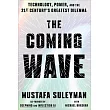Apply revolutionary deep learning technology to the fast-growing field of medical image segmentation
Precise medical image segmentation is rapidly becoming one of the most important tools in medical research, diagnosis, and treatment. The potential for deep learning, a technology which is already revolutionizing practice across hundreds of subfields to impact medical image segmentation, is immense. The prospect of using deep learning to address the traditional shortcomings of image segmentation demands close inspection and wide proliferation of relevant knowledge.
Deep Learning Applications in Medical Image Segmentation meets this demand with a comprehensive introduction to this technology and its growing applications. Covering both the foundational concepts of the technology and its advanced techniques, it offers a one-stop resource for researchers and other readers looking for a detailed understanding of the topic. It’s deeply engaged with the main challenges and recent advances in the field of deep-learning-based medical image segmentation.
Readers will also find:
- Analysis of different deep learning models, including FCN, UNet, SegNet, Dee Lab, and many more
- Detailed discussion of medical image segmentation divided by area, incorporating all major organs and organ systems
- Recent deep learning advancements in segmenting brain tumors, retinal vessels, and inner ear structures
- Analyzes the effectiveness of deep learning models in segmenting lung fields for respiratory disease diagnosis
- Explores the application and benefits of Generative Adversarial Networks (GANs) in enhancing medical image segmentation
- Identifies and discusses the key challenges faced in medical image segmentation using deep learning techniques
- Provides an overview of the latest advancements, applications, and future trends in deep learning for medical image analysis
Deep Learning Applications in Medical Image Segmentation is ideal for academics and researchers working with medical image segmentation, as well as professionals in medical imaging, data science, and biomedical engineering.



 天天爆殺
天天爆殺  今日66折
今日66折 
























 博客來
博客來 博客來
博客來 博客來
博客來 博客來
博客來 博客來
博客來